Industrial boilers operate under extremely high pressure and temperature conditions, making them one of the most safety-critical systems in any facility. A single malfunction—whether from overpressure, overheating, or component failure—can lead to catastrophic accidents, property damage, or even loss of life. That’s why boiler safety isn’t optional—it’s engineered into every aspect of the system’s design.
Key safety features in industrial boiler design include pressure relief valves, low-water cutoffs, flame failure detection systems, high-limit temperature and pressure controls, safety interlocks, automatic shutdown mechanisms, blowdown systems, and emergency stop controls. Modern systems also incorporate alarms, remote monitoring, and compliance with ASME, CE, or ISO standards to ensure operator and equipment safety.
Understanding these features is essential for selecting a boiler that not only meets production needs but also complies with industry regulations and minimizes operational risks.
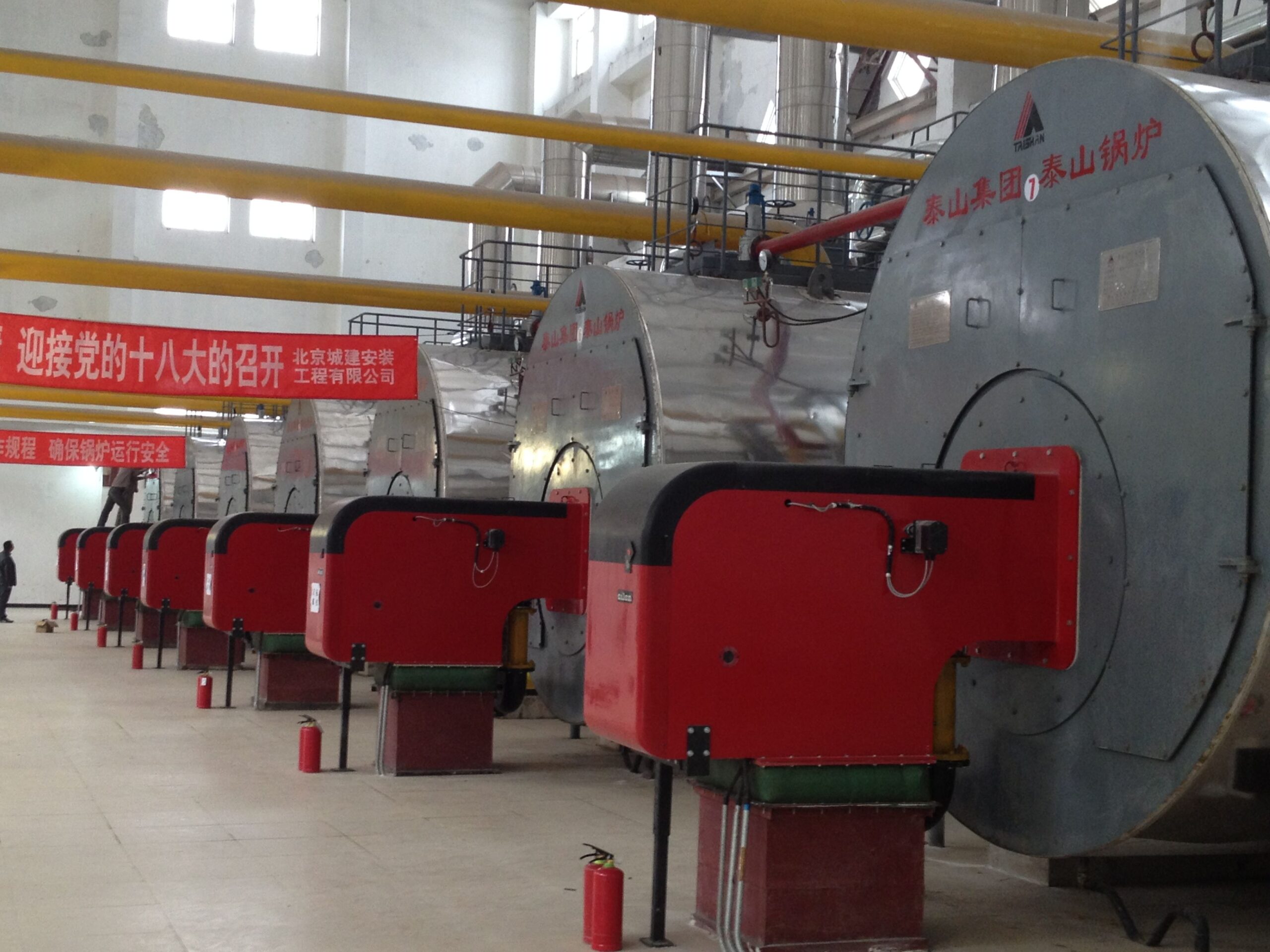
What Is the Role of Pressure Relief Valves and How Do They Prevent Overpressure Incidents?
Industrial boiler systems operate under high pressure and temperature to produce steam or hot water for critical processes. But if pressure rises beyond the safe design limit, it can cause explosions, equipment failure, or serious injury. That’s why pressure relief valves (PRVs) are mandatory safety components in all boiler systems. They act as automatic guardians, releasing excess pressure to prevent catastrophic incidents.
The primary role of a pressure relief valve is to automatically open when boiler pressure exceeds a predetermined safe limit, releasing steam or fluid to prevent overpressure conditions. Once pressure returns to a safe level, the valve closes again. This simple but vital mechanism protects the boiler, operators, and facility.
Without functioning PRVs, even a small control malfunction could turn a pressure vessel into a bomb.
Pressure relief valves are legally required on industrial boilers to prevent pressure-related explosions.True
PRVs are mandated by safety codes like ASME and EN to relieve excess pressure and avoid equipment damage or personal harm.
🔧 How Pressure Relief Valves Work
| Component | Function |
|---|---|
| Spring-loaded disc | Holds valve closed under normal pressure |
| Set pressure | Pre-calibrated level at which the valve opens |
| Discharge outlet | Releases steam or fluid safely away from equipment |
| Blowdown | Pressure drop needed before the valve reseats and closes |
When the boiler reaches or exceeds its maximum allowable working pressure (MAWP), the spring compresses, opening the valve and venting the excess pressure to atmosphere or a safe containment system.
🚨 Why PRVs Are Critical in Boiler Systems
| Risk | PRV Prevention Mechanism |
|---|---|
| Excess steam pressure buildup | PRV releases steam before pressure reaches dangerous levels |
| Burner control failure | If burner keeps firing, PRV prevents rupture |
| Feedwater system error | Water blockages or surges can increase pressure—PRV vents it |
| Safety system malfunction | Acts as a last line of defense when control logic fails |
| Operator error | PRVs still work automatically without human intervention |
🧪 Real-World Example: PRV Saves Boiler from Overpressure
Scenario: A 10-ton/hr gas boiler experienced a faulty steam control valve that failed to open. Within minutes, pressure spiked from 10 bar to 13.5 bar.
✅ The pressure relief valve, set at 13 bar, opened automatically and safely vented steam for 12 seconds.
🔧 After pressure dropped to 11.8 bar, the valve closed without manual action.
📋 Result: No equipment damage, no downtime, no safety breach.
✅ Pressure Relief Valve Installation Checklist
| Best Practice | Why It Matters |
|---|---|
| Set to open below MAWP (e.g., 10% below) | Ensures safe margin before design pressure is exceeded |
| Properly sized for boiler capacity | Must discharge steam fast enough to relieve overpressure |
| Directed discharge away from personnel | Prevents burns or injury during venting |
| Regular inspection and testing | Confirms responsiveness and spring tension |
| Use of certified and code-approved valves | Ensures compliance with ASME, EN, or IBR standards |
💡 Tip: One Boiler May Need Multiple PRVs
Large or high-capacity boilers may require multiple pressure relief valves installed at different connection points. Each valve should be:
Sized correctly
Calibrated to specific pressure levels
Tested annually per code requirements
Final Word
Pressure relief valves are the silent heroes of boiler safety—they work in the background, only springing into action when something goes wrong. Without them, pressure buildup could destroy equipment and endanger lives. Installing, sizing, and maintaining PRVs correctly is not just good practice—it’s a legal and operational necessity.
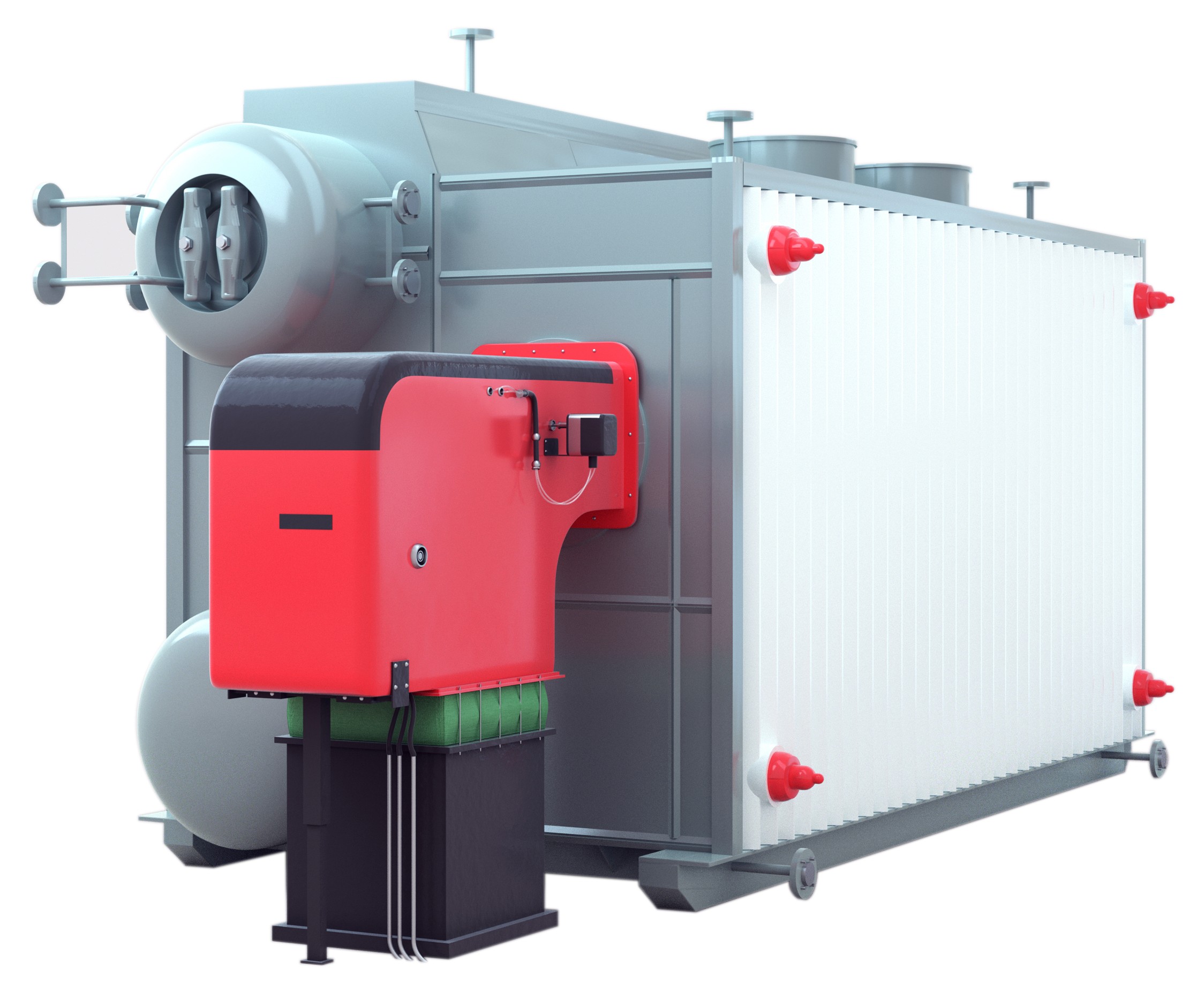
How Do Low-Water Cutoff and Water Level Controls Protect Boiler Operation?
Water is the lifeblood of any steam boiler. If the water level drops too low, the boiler can overheat, warp, or even explode—posing serious risks to both equipment and personnel. This is why low-water cutoff (LWCO) and water level controls are essential protection devices in all boiler systems. They monitor, regulate, and respond to water level changes to ensure the system operates safely and efficiently at all times.
Low-water cutoff devices automatically shut down the boiler when the water level falls below a safe operating range, while water level controls maintain the water within that range to prevent both overfilling and dry firing. Together, they protect the boiler from overheating, pressure surges, and catastrophic failure.
These systems are critical for safe operation, especially in steam boilers where high temperatures can quickly damage internal components if left unchecked.
Low-water cutoff systems are legally required in most industrial steam boiler applications.True
Safety codes like ASME CSD-1 and NFPA mandate LWCOs to prevent damage caused by low-water conditions.
🔍 How These Devices Work Together
| Device | Primary Function |
|---|---|
| Low-Water Cutoff (LWCO) | Senses dangerously low water level and triggers an emergency shutdown |
| Water Level Control | Monitors and maintains water within the safe range via pump actuation |
| Feedwater Valve or Pump | Receives signal from level control to refill boiler as needed |
| Alarm System | Alerts operator when level is out of range or LWCO is triggered |
🔧 What Happens When Water Drops Too Low?
Normal Operation: Water level is steady, sensors confirm safe range
Sudden Loss or Delay in Feedwater: Water level starts falling
Water Level Control Attempts Recovery: Triggers pump to refill
If Water Keeps Falling:
LWCO activates at low threshold
Boiler shuts off burner instantly
Alarm is triggered to alert the operator
System remains locked out until manually reset and water restored
✅ This sequence prevents overheating of the pressure vessel, which could otherwise cause rupture or failure of tubes and drums.
📊 Real-World Failure vs. Protected System
| Scenario | With LWCO & Controls | Without These Devices |
|---|---|---|
| Feedwater pump failure | Boiler shuts down safely | Boiler overheats, possible explosion |
| Operator forgets to monitor level | Alarm sounds, boiler shuts off | Dry firing damages internal components |
| Control valve sticks | System alerts, triggers backup protocol | Boiler runs dry, loss of system integrity |
✅ Required Safety Standards and Best Practices
| Standard / Guideline | Requirement |
|---|---|
| ASME CSD-1 | Mandatory LWCO for steam and hot water boilers |
| NFPA 85 | Control and interlock standards for boiler water level |
| EN 12952 / 12953 | Requires level control systems for European markets |
| IBR (India) | Prescribes level control and safety interlocks |
All industrial boilers must comply with local and international codes, which universally mandate LWCO and water level control systems.
🔧 Types of Water Level Control Devices
| Type | How It Works | Use Case |
|---|---|---|
| Float-type Control | Uses a mechanical float to sense level and actuate switch | Small and mid-sized boilers |
| Probe-type (Electrode) | Uses conductivity sensors to detect water levels | Most modern industrial systems |
| Modulating Control | Continuously adjusts feedwater valve for stable level | Large steam boilers |
| On-Off Control | Turns feed pump on/off at upper/lower levels | Simpler systems |
🛠️ Maintenance Tips for Safety
Test LWCO weekly to confirm it triggers shutdown
Inspect and clean electrodes regularly to prevent fouling
Verify alarm functions and reset procedures
Check for pump response when low-level signal is sent
Calibrate sensors annually or as per manufacturer’s guidance
Final Word
Boiler water level protection systems are not just recommended—they’re required. Low-water cutoff and level controls serve as your front line of defense against overheating, dry firing, and equipment loss. They not only ensure safety but also extend boiler life and minimize downtime.
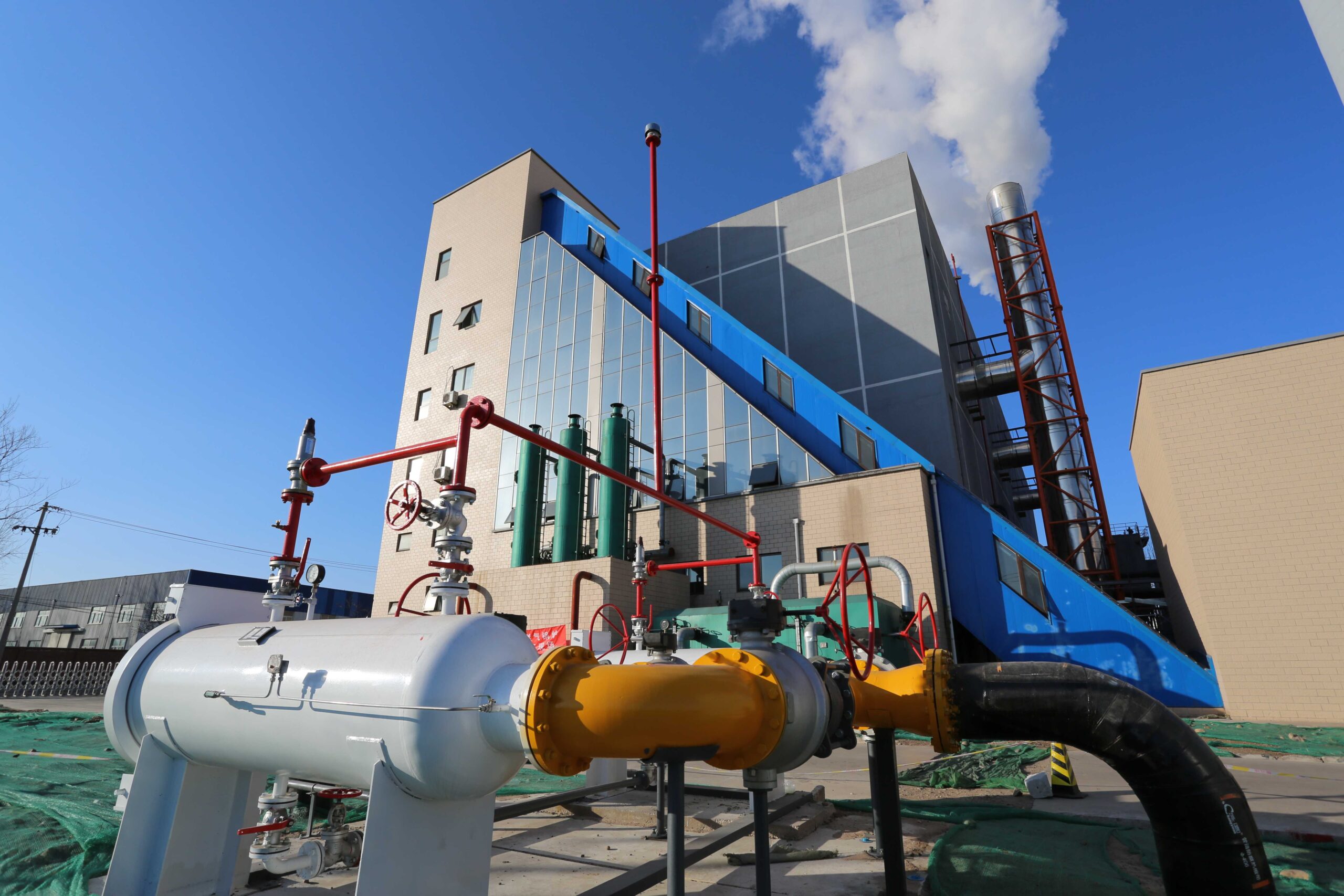
What Safety Functions Do Burner Management and Flame Detection Systems Provide?
An industrial boiler can be as dangerous as it is powerful—especially when dealing with fuel combustion under pressure. That’s why burner management systems (BMS) and flame detection systems are required in all modern boiler setups. These integrated safety systems are not just add-ons—they are the brains and guardians of the combustion process, ensuring your boiler ignites correctly, operates safely, and shuts down instantly in case of danger.
Burner management systems (BMS) control the safe startup, operation, and shutdown of the boiler’s burner, while flame detection systems monitor the flame in real-time and trigger immediate shutdown if flame failure occurs. Together, they prevent fuel explosions, backfires, overheating, and other combustion-related hazards.
These systems form the foundation of boiler safety logic, ensuring fuel is never introduced unless it can be burned safely.
Flame detection and burner management systems are mandatory in industrial boiler safety standards.True
Codes like NFPA 85, ASME CSD-1, and EN 746 require automatic burner shutdown if flame is not detected during operation.
🔍 What Do These Systems Actually Do?
| System | Main Function |
|---|---|
| Burner Management System (BMS) | Controls ignition sequence, purge cycles, fuel valve timing, and shutdown logic |
| Flame Detection System | Verifies the presence of a flame and cuts off fuel if flame is not confirmed |
| Safety Interlocks | Ensures all conditions (airflow, pressure, valve status) are safe before firing |
These systems prevent dangerous conditions like:
Unburned fuel buildup (risk of explosion)
Misfiring or flame instability
Fuel valve stuck open
Air/fuel imbalance
Operator error during startup
🔥 Step-by-Step Safety Functions of Burner & Flame Systems
Pre-Purge Phase
BMS runs blower to purge furnace of any residual gas or air (usually 30–90 seconds)
Ensures clean combustion chamber before ignition
Ignition Check
Spark or pilot ignition initiated
Flame detection system verifies flame within 3–5 seconds
If no flame is detected, system locks out immediately
Fuel Valve Control
Fuel valve opens only after flame presence is confirmed
If flame is lost during operation, fuel valve closes within milliseconds
Continuous Monitoring
UV/IR sensors or flame rods constantly check for flame signal
Signal strength and consistency are monitored
Shutdown/Lockout
If fault is detected (e.g., flame failure, low airflow), BMS triggers full shutdown
Alarm is activated, and manual reset is required
⚙️ Types of Flame Detectors Used
| Type | How It Works | Common Use |
|---|---|---|
| UV Sensor | Detects ultraviolet radiation from the flame | Gas and oil-fired burners |
| IR Sensor | Detects infrared heat from flame | Used in combination with UV for reliability |
| Flame Rod (Ionization Probe) | Measures electrical current in flame path | Simple, cost-effective, gas burners |
🔧 Why These Systems Are Critical
| Potential Hazard | Prevention via BMS/Flame System |
|---|---|
| Unburned fuel explosion | System won’t allow fuel if no flame is confirmed |
| Flashback or backfire | Fast shutdown at first sign of instability |
| Overheating or thermal damage | Stops combustion and alerts operator |
| Operator override or bypass | Interlocks prevent unsafe manual intervention |
| Fuel valve malfunction | Safety shuts valve automatically on flame loss |
📋 Compliance with Global Safety Standards
| Standard | Requirement |
|---|---|
| NFPA 85 | Mandates BMS for all boiler and combustion systems |
| ASME CSD-1 | Requires flame supervision and automatic fuel shutoff |
| EN 746-2 | Defines combustion safety requirements for thermal processing units |
| IEC 61508/61511 | Safety Integrity Level (SIL) compliance for high-risk applications |
🛠️ Maintenance and Testing Tips
Test flame detection system weekly (simulated flame loss shutdown test)
Inspect sensor lenses and flame rod regularly for fouling or degradation
Verify purge and lockout sequences during scheduled shutdowns
Calibrate burner controls and BMS logic annually or per OEM guideline
Review alarm history and event logs to catch early issues
Final Word
A safe boiler starts with a smart burner system and dependable flame detection. These technologies don’t just automate combustion—they prevent disaster. Without them, even a minor fault could lead to uncontained fire, explosion, or permanent equipment damage. If your boiler doesn’t have modern burner management and flame detection, it’s not just outdated—it’s unsafe.
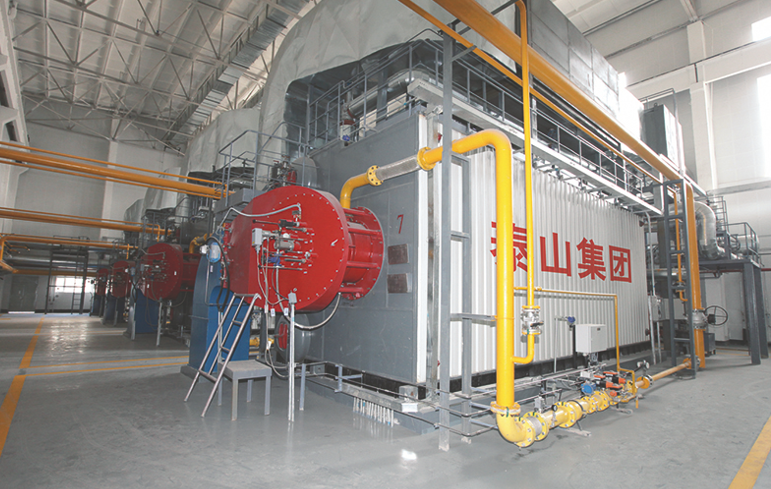
How Do High-Limit Pressure and Temperature Controls Ensure Safe Performance?
Industrial boilers operate under high pressures and temperatures to produce reliable steam or hot water. But if those operating limits are exceeded—even briefly—the result can be ruptured vessels, damaged equipment, or even explosions. That’s why high-limit pressure and temperature controls are built into every boiler system. These safety mechanisms act as the system’s final line of defense, automatically shutting down the burner if operating conditions go beyond safe thresholds.
High-limit pressure and temperature controls ensure safe boiler performance by monitoring critical parameters and automatically stopping burner operation when pressure or temperature exceeds pre-set safety limits. This prevents overheating, pressure vessel rupture, and other hazardous failures.
These controls are required by safety codes and must function independently from regular operating controls to guarantee safe shutdown in an emergency.
High-limit pressure and temperature controls are essential safety devices for all industrial boilers.True
They prevent dangerous overpressure or overheating by triggering an automatic shutdown when preset safety thresholds are exceeded.
🔍 What Are High-Limit Controls?
| Control Type | Primary Function |
|---|---|
| High-Limit Pressure Control | Monitors steam or system pressure and shuts off burner if it exceeds the maximum safe pressure |
| High-Limit Temperature Control | Monitors water or steam temperature and shuts down burner to prevent overheating |
| Manual Reset Feature | Requires operator to reset manually after shutdown—prevents auto-restart under unsafe conditions |
These controls are redundant to operating controls, meaning they only activate if the primary system fails.
⚙️ How High-Limit Controls Work in a Boiler
Boiler is running normally at set pressure and temperature
A fault occurs (e.g., feedwater interruption, control valve stuck, burner over-fires)
Operating controls fail to stabilize system
Pressure or temperature exceeds preset high-limit setting
High-limit control activates
Burner is shut down immediately
Alarm is triggered
Manual reset is required after system is inspected
✅ This mechanism prevents catastrophic pressure or thermal buildup inside the boiler.
🚨 Real-World Safety Scenario
Situation: A boiler designed for 10-bar operation experiences a stuck steam control valve, causing pressure to spike.
Operating pressure control fails to respond
High-limit pressure control trips at 11 bar
Burner shuts down immediately
Boiler vessel protected from exceeding safe pressure
Disaster averted, and no damage to equipment
📊 Safe Operating vs. Limit Settings
| Control | Typical Setpoint | Function |
|---|---|---|
| Operating Pressure Control | ~80–90% of boiler design pressure | Regulates normal burner firing |
| High-Limit Pressure Control | ~100–105% of max allowable pressure | Shuts down burner if pressure goes too high |
| Operating Temperature Control | ~90–95°C for hot water systems | Controls burner modulation |
| High-Limit Temperature Control | ~99–102°C (or per code) | Shuts down system to prevent overheating |
🛠️ Maintenance and Testing Best Practices
| Task | Recommended Frequency | Why It Matters |
|---|---|---|
| Function test of high-limit controls | Monthly or as per code | Verifies that shutdown triggers correctly |
| Calibration against reference gauge | Annually | Ensures accuracy of pressure and temperature trip points |
| Manual reset test | With routine maintenance | Confirms operator intervention is required after fault |
| Visual inspection of wiring and sensors | Every shutdown or inspection cycle | Checks for loose connections or corrosion |
✅ Required by Global Boiler Safety Standards
| Standard | Requirement |
|---|---|
| ASME CSD-1 | Mandates separate high-limit devices with manual reset |
| NFPA 85 | Requires combustion and overpressure controls for all steam boilers |
| EN 12952 / 12953 | European codes demand redundant safety limits |
| IBR (India) | Requires mechanical safety interlocks for overpressure protection |
High-limit controls must be code-compliant, tested regularly, and independently wired from operating controls.
🔧 Tips to Ensure Reliability
Never bypass or override high-limit safety controls
Ensure settings are not too close to operating limits (maintain safety margin)
Use controls with manual reset to ensure faults are inspected before restart
Match control ratings with boiler capacity and pressure class
Keep pressure and temperature sensors clean and insulated from vibration
Final Word
High-limit pressure and temperature controls act as the emergency brakes of your boiler system. While operating controls manage everyday performance, high-limit devices protect against the unexpected. Without them, a single failure could lead to equipment damage, lost production—or worse, a safety incident.

What Interlocks and Automatic Shutdown Features Are Standard in Modern Boiler Systems?
Modern industrial boilers are equipped with a wide range of safety interlocks and automatic shutdown features designed to detect problems before they escalate and to protect both personnel and equipment. These smart safety systems are not optional—they are required by global boiler safety codes and are crucial in preventing conditions like overpressure, dry firing, flame failure, or fuel accumulation.
Standard interlocks and automatic shutdown features in modern boiler systems include flame failure detection, low-water cutoff, high-pressure limit, high-temperature limit, draft failure, and fuel valve integrity checks. These interlocks continuously monitor critical safety parameters and instantly shut down the burner when abnormal or unsafe conditions occur.
By automatically locking out the system and requiring a manual reset, they ensure faults are not overlooked and unsafe restarts are avoided.
Modern industrial boilers include interlocks for pressure, temperature, flame presence, and water level to ensure safe shutdown.True
These interlocks are required by standards like ASME CSD-1, NFPA 85, and EN 12952 to prevent dangerous operating conditions.
🔒 What Is a Safety Interlock?
A safety interlock is a built-in logic function or sensor system that:
Monitors a critical condition (e.g., flame, pressure, water level)
Prevents unsafe operations (e.g., fuel injection without ignition)
Automatically shuts down the boiler if that condition is violated
Locks out restart until the fault is cleared and a manual reset is performed
These functions are programmed in the Burner Management System (BMS) or hardwired in safety circuits.
✅ Standard Interlocks and Shutdown Features in Boilers
| Safety Function | Trigger Condition | System Response |
|---|---|---|
| Flame Failure Interlock | No flame detected within ignition time or flame lost | Fuel valves close instantly; burner shut off |
| Low-Water Cutoff (LWCO) | Water level below safe range | Burner shutdown; alarm triggered |
| High-Pressure Limit | Boiler pressure exceeds safe threshold | Burner stops; safety valve may release |
| High-Temperature Limit | Steam or water temperature exceeds design limit | Burner lockout; manual reset required |
| Fuel Pressure Low/High | Fuel gas or oil pressure out of allowable range | Burner lockout to prevent improper combustion |
| Air Flow Failure | Fan or damper malfunction; insufficient air for combustion | Burner shutdown; alarms triggered |
| Purge Interlock | Pre-purge or post-purge not completed properly | Ignition sequence halted |
| Blower Motor Failure | Draft or combustion air fan fails | Burner cannot operate; system interlocked |
| Ignition Failure | Ignition spark or pilot fails to light burner | Fuel shutoff; lockout for manual inspection |
| Stack Draft Failure | Poor exhaust or backdraft detected | Burner shutdown; potential flue gas alarm |
| Combustion Air Damper Failure | Damper not in proper position | Prevents burner from firing |
| Sensor Failure or Signal Loss | Loss of input from temperature, pressure, or flame sensor | Burner shutdown; fault alarm |
🔁 How Interlocks Work in Practice: Sequence Example
Start Command Given
BMS verifies all interlocks are satisfied (e.g., airflow OK, water level normal)
Pre-purge cycle begins—furnace cleared of gases
Ignition initiated; flame detection confirms ignition
Burner fires normally under supervision
If any parameter goes out of limit—burner shuts down instantly
Manual reset required after safety check
This system prevents unsafe startups, fuel leaks, flame failures, and pressure/temperature excursions.
🔧 Compliance With International Boiler Codes
| Code | Required Interlocks and Shutdown Functions |
|---|---|
| ASME CSD-1 | Flame failure, high limit pressure, LWCO, and manual reset required |
| NFPA 85 | Multiple safety interlocks, dual flame sensors, purge cycles |
| EN 12952 / 12953 | Mandates automatic shutoff for water level, pressure, and flame |
| IEC 61508 | Functional safety and SIL-rated logic systems in large installations |
These standards enforce the design and periodic testing of boiler interlock systems.
🛠️ Maintenance and Testing Recommendations
| Check Point | Recommended Frequency | Purpose |
|---|---|---|
| Interlock function testing | Monthly | Confirm that each condition causes shutdown |
| Sensor calibration | Annually | Ensure accurate signal inputs to interlocks |
| Manual reset test | During inspections | Verify human oversight is required post-trip |
| Burner startup sequence test | After major maintenance | Confirm purge and interlocks before ignition |
| Alarm system check | Monthly | Ensure alarms are loud, visible, and logged |
Final Word
In today’s industrial environments, boiler safety isn’t optional—it’s built into every system via interlocks and auto shutdowns. These features act as real-time safety guardians, detecting danger and acting faster than any human operator could. Without them, the risk of explosion, thermal failure, or gas leak would be dangerously high.
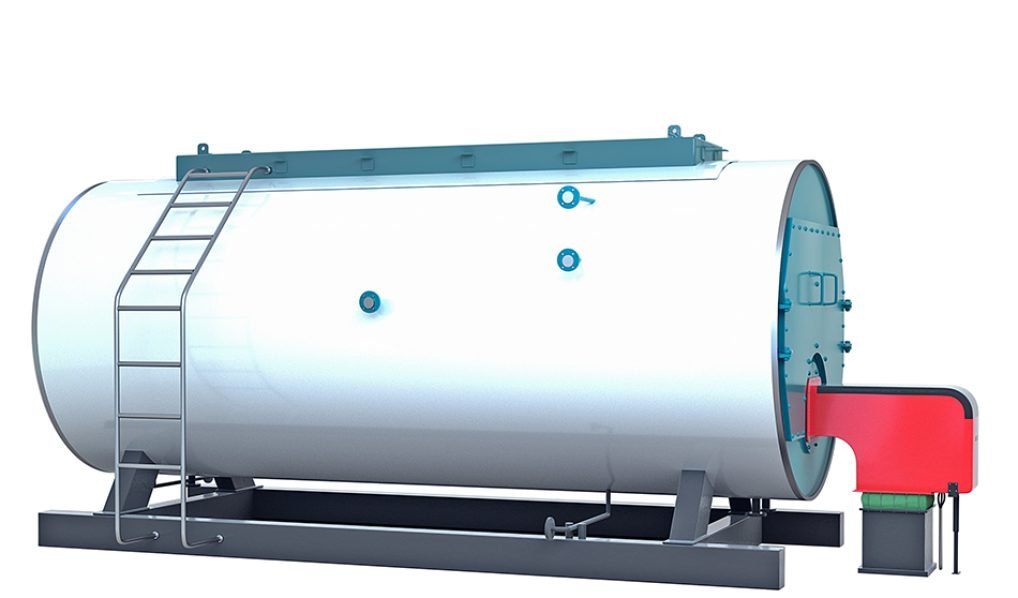
How Do Codes, Certifications, and Digital Monitoring Enhance Boiler Safety Compliance?
Boiler systems operate under intense pressure, high temperatures, and complex fuel combustion processes—all of which demand strict safety and operational discipline. A single lapse can lead to costly damage, environmental fines, or even catastrophic injury. That’s why industry codes, product certifications, and digital monitoring technologies exist—to enforce, verify, and actively monitor compliance with safety standards.
Codes, certifications, and digital monitoring enhance boiler safety compliance by establishing legally mandated design and operating standards, verifying that equipment meets them through third-party inspection, and continuously tracking system parameters to detect faults before they escalate. This layered approach ensures safer operation, regulatory alignment, and reduced risk of incidents.
These mechanisms protect lives, equipment, and production while ensuring you stay within legal and insurance-required frameworks.
Boiler codes and certifications are legally required in most countries and essential for safe operation.True
Authorities like ASME, EN, and IBR mandate structural, performance, and safety design standards that must be met and validated before operation.
🔐 1. Safety Codes: The Foundation of Compliance
| Code Authority | Coverage Area | Key Focus |
|---|---|---|
| ASME (USA) | Pressure vessels, piping, and safety design | Structural integrity, pressure relief, control systems |
| NFPA 85 (USA) | Combustion and burner management | Flame safety, fuel control, ignition interlocks |
| EN 12952 / 12953 (EU) | Water-tube and fire-tube boilers | Design, control, inspection, testing |
| IBR (India) | Boiler manufacturing and inspection | Local fabrication, third-party certification |
| ISO 16528 | Global boiler safety harmonization | Standardizes requirements across regions |
These codes define safety standards for design, materials, manufacturing, testing, and operation. Non-compliance can lead to project shutdowns, legal penalties, or refusal of insurance coverage.
🏅 2. Certifications: Proof of Safety and Quality
| Certification | What It Confirms | Issued By |
|---|---|---|
| ASME “S” Stamp | Boiler complies with ASME construction and safety codes | ASME-authorized body |
| CE Mark (Europe) | Conformance with EU pressure equipment and safety directives | Notified Body |
| ISO 9001 / ISO 14001 | Quality and environmental system control during manufacturing | Accredited certifiers |
| IBR Certification | Boiler is registered and approved for use in India | Indian Boiler Authorities |
| PED Certification (EU) | Pressure equipment directive compliance | EU-accredited agency |
These certifications prove that the boiler system has undergone rigorous testing, inspection, and documentation during manufacturing and installation. Certified boilers often require less regulatory red tape during commissioning and are more easily insured.
📊 3. Digital Monitoring: Real-Time Safety Surveillance
| Monitoring Tool | Function |
|---|---|
| SCADA or HMI Interface | Visualizes boiler parameters (pressure, temperature, level, flame) |
| Alarm Management System | Triggers warnings on limit violations and logs incidents |
| Data Logging | Tracks performance history for audits and inspections |
| Remote Access Control | Allows off-site experts to monitor and troubleshoot safety issues |
| AI/IoT Predictive Alerts | Uses data trends to predict component failures |
Digital monitoring not only boosts safety—it simplifies compliance, as records are automatically saved and retrievable for inspections or audits.
📉 Real-World Safety Gains From Compliance and Monitoring
| Before (Legacy System) | After (Compliant + Digitally Monitored System) |
|---|---|
| Manual logs prone to human error | Digital records stored automatically and securely |
| Delayed detection of faults | Real-time alerts on pressure, flame, and water levels |
| Local inspections only | Remote compliance access for third-party inspectors |
| Risk of invalid operating permit | Instant proof of certified compliance at any time |
✅ Combined Benefits of Codes + Certifications + Monitoring
| Benefit | Impact on Safety Compliance |
|---|---|
| Design Safety Assurance | Codes ensure boiler is built to withstand extreme conditions |
| Legal and Insurance Approval | Certification proves conformity to laws and reduces liability |
| Early Fault Detection | Digital monitoring prevents minor faults from becoming incidents |
| Audit Readiness | Digital logs simplify inspections and third-party verification |
| Operator Awareness and Training | Clear interfaces and alerts help operators respond quickly |
🛠️ Best Practices for Staying Compliant
Purchase only code-compliant, certified boilers from trusted manufacturers
Ensure commissioning reports and inspection certificates are filed and backed up
Schedule regular training for operators based on updated codes and safety scenarios
Install digital monitoring interfaces with alarm logs, remote access, and data history
Integrate third-party inspections into annual maintenance schedules
Final Word
Boiler safety isn’t about luck—it’s about engineering discipline, documented compliance, and continuous awareness. By combining trusted safety codes, third-party certification, and intelligent digital monitoring, your facility can ensure maximum protection, regulatory approval, and peace of mind.
🔍 Conclusion
Industrial boiler safety is achieved through a combination of mechanical protections, control systems, and regulatory compliance. These safety features—ranging from pressure relief valves to intelligent shutdown protocols—are vital for protecting personnel, equipment, and the facility as a whole.
📞 Contact Us
💡 Need help selecting a safe, compliant industrial boiler system? We provide custom-engineered boilers with built-in safety features, operator training, and full documentation to meet your regulatory and operational requirements.
🔹 Partner with us for industrial boiler systems engineered with safety at their core. 🛡️🔥📋✅
FAQ
What are the core safety features in an industrial boiler design?
Industrial boilers are equipped with multiple safety features to prevent accidents, equipment damage, and operational downtime. Core safety components include:
Pressure Relief Valve – Prevents overpressure by releasing steam
Low Water Cutoff (LWCO) – Shuts down boiler if water falls below safe level
Flame Failure Detection – Stops fuel supply if flame is not detected
Safety Shutoff Valves – Automatically block fuel flow during fault conditions
High/Low Pressure Alarms – Warn operators of unsafe operating pressures
Overtemperature Protection – Stops boiler if internal temperatures exceed limits
Emergency Shutdown (ESD) System – Manual or automatic stop in emergencies
These are required by ASME, OSHA, and other regulatory bodies for safe boiler operation.
How does a pressure relief valve protect the boiler?
The pressure relief valve is one of the most critical safety devices:
It opens when pressure exceeds a preset limit
Releases excess steam to prevent boiler explosion or rupture
Automatically reseats once safe pressure is restored
Typically rated and certified to ASME Boiler & Pressure Vessel Code
Proper testing and calibration are essential for ongoing reliability.
Why is the low water cutoff (LWCO) vital for safety?
A boiler must never operate with insufficient water. The LWCO prevents:
Dry firing, which can damage the boiler shell or tubes
Overheating of metal surfaces, leading to deformation or explosion
The LWCO triggers a complete shutdown if water falls below the safe level
Many modern systems include redundant water level sensors for added protection.
What safety measures address combustion and flame control?
Combustion safety features include:
Flame scanner or UV sensor – Detects flame presence
Fuel shutoff valves – Close automatically if no flame is detected
Purge cycle – Clears combustion chamber before startup
Pilot and main burner verification – Ensures flame stability
A failed flame detection will cut fuel supply instantly to avoid unburnt fuel buildup or explosion.
Are modern boilers equipped with automatic safety controls?
Yes. Modern industrial boilers use integrated control systems for real-time safety monitoring:
PLC-based safety interlocks
Alarms for pressure, temperature, flame, and water levels
Auto-shutdown protocols for multiple fault conditions
Remote diagnostics and alerts to maintenance staff
These systems ensure fast response to anomalies, improving safety and minimizing downtime.
References
ASME Boiler & Pressure Vessel Code – Safety Requirements – https://www.asme.org
Cleaver-Brooks – Boiler Safety Controls Guide – https://www.cleaverbrooks.com
Spirax Sarco – Boiler Protection Devices – https://www.spiraxsarco.com
Powerhouse – Safe Boiler Operation Guide – https://www.powerhouse.com
Miura Boiler – Smart Safety Systems – https://www.miuraboiler.com
Hurst Boiler – Boiler Safety and Control Features – https://www.hurstboiler.com
Thermodyne Boilers – Industrial Safety Equipment – https://www.thermodyneboilers.com
BioEnergy Consult – Industrial Boiler Risk Management – https://www.bioenergyconsult.com
OSHA – Boiler Room Safety Regulations – https://www.osha.gov
DNV – Boiler Design and Safety Assurance Standards – https://www.dnv.com

